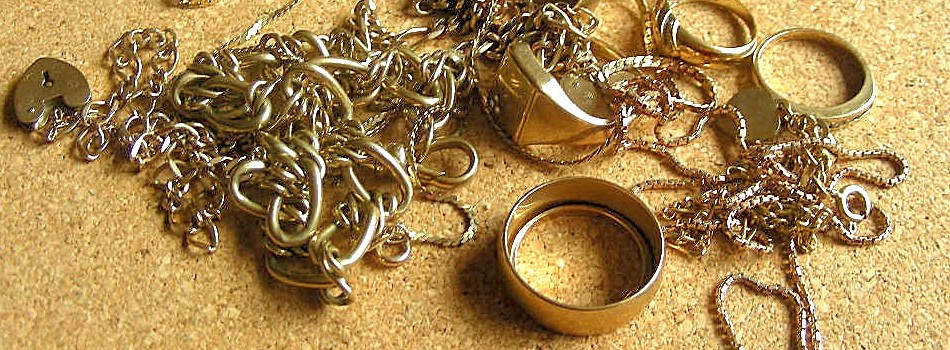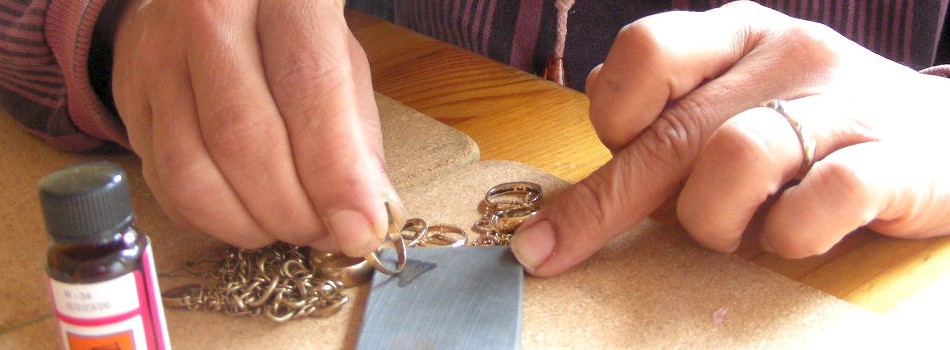What's the difference between golds?
However, that certainly isn’t to say that you’d want to wear jewellery made exclusively of the purest gold. Why not?
9ct, 14ct, 18ct, 24ct - what is the difference?

You’ve probably got at least a basic understanding of how the various carats of gold differ - the higher the carat, the better the quality of gold, right?
However, that certainly isn’t to say that you’d want to wear jewellery made exclusively of the purest gold.
But why not?
Understanding gold
Well, one of the major attractions of everyone’s favourite yellow metal (in addition to its financial value and brilliant lustre, of course!) is its incredible malleability. In fact, one ounce of gold can be flattened thin enough to cover more than 9 square metres, according to the American Museum of Natural History.It’s important to note that the level of malleability is directly proportionate to the purity of the gold. Higher-carat gold is soft and pliable; lower-carat gold, on the other hand, is harder and more durable (though still more malleable than many other metals).
While this pliability makes it relatively easy for jewellers to manipulate the metal and create custom gold engagement rings and other gold jewellery, it also means that very pure gold can be easily damaged. Consequently, the most pure forms of gold are not really suited to jewellery, and are often alloyed with other metals to improve durability.
How is gold caratage calculated?
Before we get into the specifics of the different types of gold, let’s take a quick look at how purity is calculated.We can define a carat as 1/24 part of pure gold by weight, which means that 24-carat gold is considered pure gold (although, strictly speaking, it’s not quite 100 percent pure). 18ct gold, therefore, consists of 18 parts pure gold and 6 parts alloy; 14ct gold is 14 parts pure gold and 10 parts alloy, and so on.
The purity of gold can alternatively be defined as ‘fineness’, which is the amount of gold per 1,000 parts. To calculate this, we simply divide the amount of pure gold by 24 and multiply the rest by 1,000. For instance, the calculation for working out the fineness of 18ct gold would simply be:
18/24 *1000 = 750.
This means that 750 out of every 1,000 parts (i.e. 75 percent) of 18ct gold are pure gold.
Okay, that’s enough maths! Read on to learn some of the key differences between 9ct, 14ct, 18ct and 24ct gold, and discover which type of gold you should be using to make your jewellery.

9ct gold (37.5% purity)
Durable and relatively inexpensive by comparison to higher gold carats, 9ct gold jewellery is a popular choice and can be identified by the code ‘9ct’ or ‘375’, which is usually stamped (hallmarked) somewhere on the gold. 9ct gold contains the least amount of gold, but what it lacks in purity it makes up for in toughness and affordability. Due to its relative low cost and high durability, 9ct gold is widely used in engagement ring and wedding bands here in New Zealand and around the worldThis type of gold looks slightly more pale than purer variants, but you’ll have to look hard to spot the difference (in fact, most people can’t distinguish between 9ct and 14ct gold at all).
While pure yellow gold does not tarnish and will retain its original colour forever, the strong presence of alloys (the metals that make up 62.5 percent of 9ct gold) in 9ct gold are susceptible to discolouration. Special care is needed to ensure your 9ct gold jewellery keeps its original shine.
14ct gold (58.5% purity)
14ct gold strikes the happy medium between durability and beauty. Denoted by a ‘14ct’ or ‘585’ stamp, this type of gold is less likely to tarnish than 9ct gold and is significantly more resistant to scratches compared with higher-carat gold.At first glance, it may seem as though the colour of 14ct gold is very similar to that of 18ct gold, but look a little closer and you’ll see that the latter’s yellow is more rich and vivid than the former. Regardless, the low cost, durability and aesthetic of 14ct gold offers a lot of appeal.
18ct gold (75% purity)
With a few exceptions (more on that below), 18ct gold is the purest and most expensive gold found in modern jewellery, and is usually reserved for high-end pieces such as diamond engagement rings. This type of gold is easily recognised by it’s ‘18ct’ or ‘750’ stamp.18ct gold is far less likely to tarnish in comparison with 9ct and 14ct gold, but the tradeoff is that you lose durability. As a result, you’ll want to be especially careful when wearing 18ct gold to prevent your gold jewellery getting scratched or damaged.
24ct gold (100% purity)
Radiating a deep yellow at the highest end of the purity scale we have 24ct gold, identifiable by a ‘24ct’ or ‘999’ stamp. This type of gold boasts an inimitable colour and shine but, due to its softness, is VERY vulnerable to scratches and can easily be bent out of shape. As you might imagine, this makes 24ct gold completely impractical for use in jewellery.Here at SilverStone Jewellery, we work with all types of gold to bring our clients’ creative visions to life. Give us a call to find out how we can help you create a custom gold jewellery piece that is truly one of a kind.













